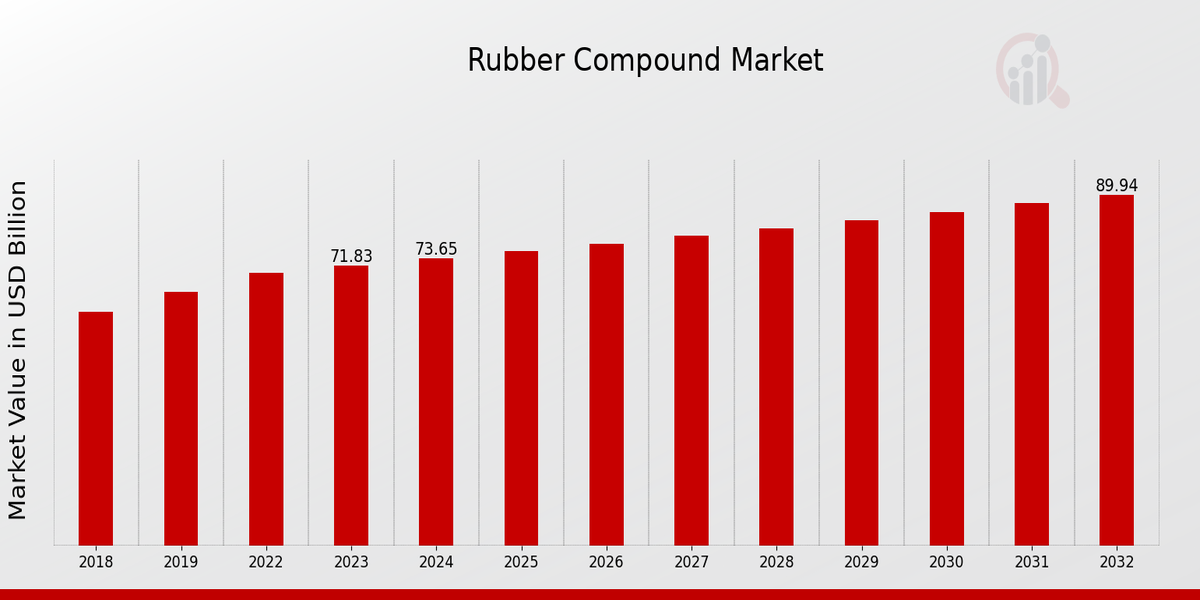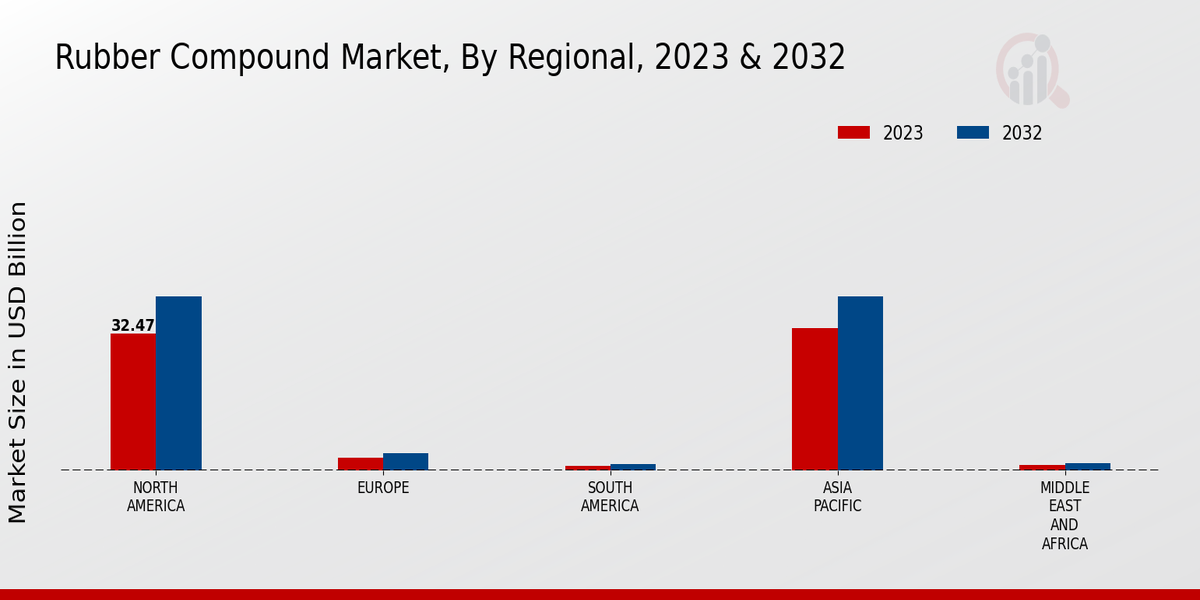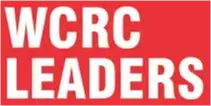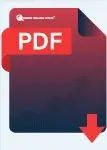Global Rubber Compound Market Overview
The Rubber Compound Market Size was estimated at 75.52 (USD Billion) in 2024. The Rubber Compound Industry is expected to grow from 77.43(USD Billion) in 2025 to 96.97 (USD Billion) by 2034. The Rubber Compound Market CAGR (growth rate) is expected to be around 2.50% during the forecast period (2025 - 2034).
Key Rubber Compound Market Trends Highlighted
The rubber compound market is driven primarily by increasing applications of rubber compounds in the automotive, construction, and industrial spheres, developing infrastructure and urbanization, and increasing consciousness about green materials. The rise in the automotive sector, particularly in developing countries, is resulting in the increased consumption of rubber compounds in tires, hoses, belts, and other parts.
Factors in the Rubber Compound Market that could stimulate growth include the emergence of low toxicity and biodegradable rubber corners, better methods of processing and accompanying technology, and greater application of rubber compounds in health and personal care products. The expanding market of rubber compounds in medical equipment, implants, and protective gear opens new avenues for growth. The increasing need for strong yet lightweight materials further extends the range of applications of rubber compounds in the aerospace and defense industries.
One of the most important factors in the rubber compound market is the enhancement of the performance of rubber compounds through incorporating nanotechnology. Customized site-specific rubber compounds are also coming up along with existing rubber composites, and there is a rise in the use of automation and digitalization in the production process. The growing awareness and implementation of environmental protection strategies are promoting the production of biodegradable waste rubber compounds from reclaimed or renewable raw materials.

Source: Primary Research, Secondary Research, MRFR Database and Analyst Review
Rubber Compound Market Drivers
Rising Demand from Automotive Industry
The automotive industry is one of the main consumers of rubber compounds used for the production of tires, hoses, and other parts. The increasing demand for automobiles, especially in emerging markets, becomes one of the key drivers of the increasing demand for rubber compounds. Besides, the growing popularity of electric cars, which also require specific types of tires and other vehicle details, also helps drive the growth of the Rubber Compound Market Industry.The automotive industry focuses on the use of more fuel-efficient and environmentally friendly vehicles that, in turn, promote the growth of rubber compounds with new properties.
Growing Infrastructure Development
The construction and infrastructure sectors are significant consumers of rubber compounds, particularly in the form of seals, gaskets, and roofing materials. The increasing investment in infrastructure projects, such as roads, bridges, and buildings, is fueling the demand for rubber compounds. The growing urbanization and population growth in emerging economies are also contributing to the growth of the Rubber Compound Market Industry. Additionally, the focus on sustainable and durable infrastructure is driving the demand for rubber compounds with enhanced properties, such as resistance to weathering and chemicals.
Advancements in Rubber Technology
The rubber industry is constantly evolving, with ongoing advancements in rubber technology. The development of new types of rubber compounds with improved properties, such as high strength, flexibility, and heat resistance, is expanding the applications of rubber compounds. These advancements are enabling the use of rubber compounds in new and innovative products, such as medical devices, electronics, and aerospace components. The focus on sustainability is also driving the development of eco-friendly rubber compounds made from renewable resources.
Rubber Compound Market Segment Insights:
Rubber Compound Market Compound Type Insights
The Rubber Compound Market is segmented by Compound Type, including Carbon Black Filled Compounds, Silica Filled Compounds, Recycled Rubber Compounds, and Specialty Rubber Compounds. In 2023, the Carbon Black Filled Compounds accounted for the highest market value in the Rubber Compound Market, with a valuation of 43.59 billion USD. It is expected that this segment will dominate the market throughout the forecast period, reaching a value of 52.82 billion USD by 2032. Carbon black filled compounds are widely used in tire manufacturing due to their high reinforcement and low cost.This feature is preferred by tire manufacturers, so their dominance in the market is not surprising. In addition, the Silica Filled Compounds are also gaining prominence in the Rubber Compound Market as the demand for fuel-efficient vehicles increases. Their lower rolling resistance allows the vehicle to be more fuel-efficient, and this has been recognized by more and more auto manufacturers. In 2023, the Silica Filled Compounds were valued at 16.12 billion USD and it is expected that this number will show a stable growth and reach 19.64 billion USD by 2032.The Recycled Rubber Compounds play a significant role in the Rubber Compound Market as well due to their contribution to sustainability. With the emergence of more eco-friendly initiatives and increasing laws and regulations regarding waste management, the demand for Recycled Rubber Compounds will only increase. In 2022, it was valued at 4.18 billion USD, and it is expected to reach 5.86 billion USD by 2031. Finally, the Specialty Rubber Compounds cater to the special performance requirements of various industries, such as aerospace, medical, and automotive.They are designed to serve various special purposes, such as resistance to considerable heat or cold temperatures, chemicals, or considerable wear and tear. This segment is expected to grow by a CAGR of 3.2% and reach a value of 3.68 billion USD by 2032. Overall, the Rubber Compound Market is mainly driven by the growing demand for rubber compounds due to the increasing popularity of tire manufacturing, the increasing production of vehicles around the world, and the growing attention paid to sustainability. The big market players tend to invest in research and development to improve the consistency and diversity of their rubber compounds.

Source: Primary Research, Secondary Research, MRFR Database and Analyst Review
Rubber Compound Market Application Insights
The Rubber Compound Market is divided into Tires, Belts and Hoses, Automotive Parts, Industrial Products, and Consumer Products. Among all the segments, Tires will occupy the largest share by 2023, with possessing about 45% of the Rubber Compound Market revenue. The reason for the significant growth of this segment is the increased demand for the product from the global automotive industry. The Belts and Hoses segment will become the second grade, and the third place will occupy the Automotive Parts segment. Due to the requirements for the necessity of rubber compounded in the majority of automotive parts, the automotive industry will be one of the most prominent in the market.The share of the Industrial Products segment and its importance will also increase significantly, as it is actively used in construction, mining industry, and in the manufacturing industry. Such a segment as Consumer Products will demonstrate steady growth as an increased demand for rubber products is expected in other sectors of consumer use.
Rubber Compound Market End-Use Industry Insights
The Rubber Compound Market is segmented into several end-use industries, including automotive, industrial, construction, consumer goods, and others. The automotive industry is the largest consumer of rubber compounds, accounting for approximately 50% of the global market share. Rubber compounds are used in various automotive components, such as tires, hoses, seals, and gaskets. The growing demand for automobiles, particularly in emerging economies, is driving the growth of the rubber compound market in this segment. The industrial sector is another significant end-use industry for rubber compounds, with a share of around 25%.Rubber compounds are used in a wide range of industrial applications, including machinery, appliances, and construction materials. The increasing demand for rubber compounds in industrial applications is attributed to their durability, resistance to wear and tear, and ability to withstand harsh conditions. The construction industry also contributes to the demand for rubber compounds, with a share of approximately 15%. Rubber compounds are used in roofing materials, flooring, and other construction applications. The growing construction activities worldwide, especially in developing countries, are expected to drive the growth of the rubber compound market in this segment.Consumer goods represent a relatively smaller segment of the Rubber Compound Market, with a share of around 5%. Rubber compounds are used in various consumer products, such as footwear, toys, and sporting goods. The increasing disposable income and growing population in emerging economies are expected to boost the demand for rubber compounds in the consumer goods segment. Other end-use industries, such as medical, aerospace, and electronics, account for the remaining share of the Rubber Compound Market. Rubber compounds are used in various applications in these industries, including medical devices, aircraft components, and electrical insulation.The growing demand for these industries is expected to contribute to the growth of the rubber compound market in these segments.
Rubber Compound Market Product Form Insights
The Rubber Compound Market is segmented by product form into solid rubber, liquid rubber, and powdered rubber. In 2023, the solid rubber segment held the largest market share of around 60%, driven by its wide range of applications in tires, hoses, and belts. The liquid rubber segment is expected to grow at the highest CAGR of 3.5% during the forecast period, owing to its increasing use in adhesives, sealants, and coatings. The powdered rubber segment is primarily used in rubber compounds for molded and extruded products, and is expected to grow at a steady pace in the coming years.
Rubber Compound Market Regional Insights
The regional segmentation of the Rubber Compound Market offers valuable insights into the market dynamics across different regions. North America holds a significant share of the market, driven by the presence of established automotive and tire manufacturing industries. Europe is another key region, with a strong demand for rubber compounds in various applications such as automotive, construction, and healthcare. The Asia-Pacific (APAC) region is poised for robust growth, owing to the rising demand from emerging economies such as China and India.South America and the Middle East Africa (MEA) regions are expected to witness steady growth, supported by increasing infrastructure development and industrialization. With a market value projected to reach USD 75.24 billion by 2024, the Rubber Compound Market is expected to continue its growth trajectory, driven by increasing demand from various industries and regions.

Source: Primary Research, Secondary Research, MRFR Database and Analyst Review
Rubber Compound Market Key Players And Competitive Insights:
The Rubber Compound Market's major players are continuously investing in research and development to introduce innovative products and solutions. Leading Rubber Compound Market players are focusing on expanding their geographical presence by establishing new production facilities and distribution networks in emerging markets. The demand for rubber compounds is growing due to increasing requirements from the automotive industry, as well as from the construction and other industries. The competitive landscape of the Rubber Compound Market is anticipated to remain fragmented, with a number of regional and global players operating.
Lanxess is a major rubber compound market player that provides a wide range of rubber compounds for different applications. The company is investing in sustainability and is focused on retaining its position in the industry through introducing innovative products and solutions. Lanxess operates worldwide through its production sites in Europe, Asia, and the Americas while maintaining an extensive distribution network. The company provides top-quality rubber compounds to its customers as a part of its commitment to sustainability.Another main competitor in the Rubber Compound Market is Cabot Corporation. The company offers a wide range of compounds from carbon black to silica to other additives. Cabot Corporation is a global company that is operating through its manufacturing sites in North America, Europe, Asia, and South America. The company’s commitment to quality and sustainability is considered to have earned it the preference of the leading rubber manufacturers. Gzkara is focused on maintaining its position by investing in research and development and supporting the industry through providing a diverse portfolio of additives and chemicals.
Key Companies in the Rubber Compound Market Include:
- Trelleborg
- Evonik Industries
- Birla Carbon
- Solvay
- Cabot Corporation
- Lanxess
- Versalis
- Zeon Corporation
- Michelin
- Sumitomo Chemical
- J. Reynolds
Rubber Compound Market Industry Developments
Increasing demand for rubber compounds in various end-use industries, such as automotive, construction, and consumer goods, is driving market growth. The growing popularity of electric vehicles, which require specialized rubber compounds for tires and other components, is also contributing to market expansion.Recent developments in the market include the launch of eco-friendly and sustainable rubber compounds by major manufacturers. For instance, in 2023, Michelin introduced a new line of tires made from sustainable rubber, sourced from rubber trees that are not grown in deforested areas. Additionally, the development of advanced technologies, such as artificial intelligence (AI) and machine learning (ML), is enabling manufacturers to optimize production processes and improve the quality of rubber compounds.
Rubber Compound Market Segmentation Insights
- Rubber Compound Market Compound Type Outlook
- Carbon Black Filled Compounds
- Silica Filled Compounds
- Recycled Rubber Compounds
- Specialty Rubber Compounds
- Rubber Compound Market Application Outlook
- Tires
- Belts and Hoses
- Automotive Parts
- Industrial Products
- Consumer Products
- Rubber Compound Market End-Use Industry Outlook
- Automotive
- Industrial
- Construction
- Consumer Goods
- Others
- Rubber Compound Market Product Form Outlook
- Solid Rubber
- Liquid Rubber
- Powdered Rubber
| Report Attribute/Metric |
Details |
| Market Size 2024 |
75.52(USD Billion) |
| Market Size 2025 |
77.43(USD Billion) |
| Market Size 2034 |
96.97(USD Billion) |
| Compound Annual Growth Rate (CAGR) |
2.50% (2025 - 2034) |
| Report Coverage |
Revenue Forecast, Competitive Landscape, Growth Factors, and Trends |
| Base Year |
2024 |
| Market Forecast Period |
2025 - 2034 |
| Historical Data |
2020 - 2024 |
| Market Forecast Units |
USD Billion |
| Key Companies Profiled |
Trelleborg, Evonik Industries, Birla Carbon, Solvay, Cabot Corporation, Lanxess, Versalis, Zeon Corporation, Michelin, Sumitomo Chemical, R. J. Reynolds |
| Segments Covered |
Compound Type, Application, End-Use Industry, Product Form, Regional |
| Key Market Opportunities |
Increasing demand for tires Growing automotive industry Technological advancements Sustainable and ecofriendly solutions Expansion into emerging markets |
| Key Market Dynamics |
Rising demand for rubber compounds in automotive, increasing use in construction, growing adoption in healthcare technological advancements in rubber processing, expanding applications in consumer goods |
| Countries Covered |
North America, Europe, APAC, South America, MEA |
Frequently Asked Questions (FAQ) :
The Rubber Compound Market is expected to reach a valuation of USD 96.97 Billion by 2034, expanding at a CAGR of 2.50% from 2025 to 2034.
Asia-Pacific is the dominant region in the Rubber Compound Market, accounting for over 55% of the market share. Other key regions include North America and Europe.
Rubber Compounds find applications in various industries, including automotive, construction, footwear, and industrial machinery.
Major players in the Rubber Compound Market include Michelin, Bridgestone, Goodyear, Continental, and Sumitomo Rubber Industries.
Rising demand for rubber compounds in the automotive industry, increasing infrastructure development, and growing consumer spending are key factors driving market growth.
Fluctuating raw material prices, intense competition, and environmental regulations pose challenges to the growth of the Rubber Compound Market.
The Rubber Compound Market is projected to expand at a CAGR of 2.50% from 2025 to 2034.
The Rubber Compound Market was valued at USD 77.43 Billion in 2025.
The Rubber Compound Market is expected to reach a valuation of USD 96.97 Billion by 2034.
Sustainability, technological advancements, and growing demand for high-performance rubber compounds are key trends influencing the market's growth.





























